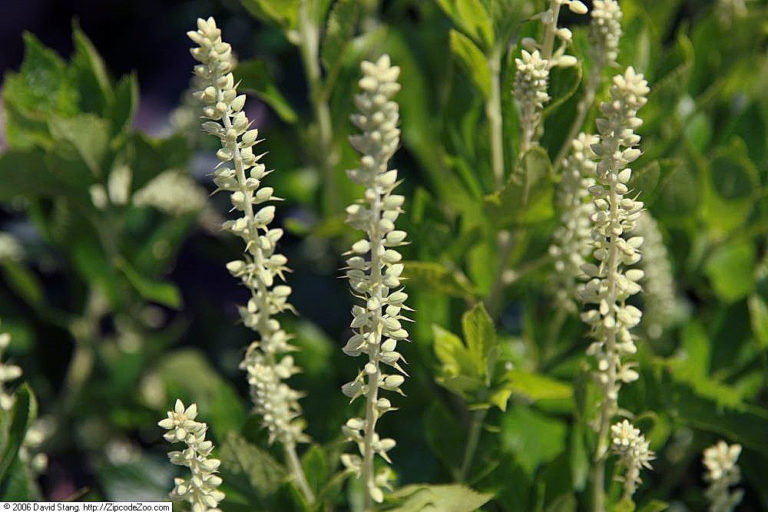Sixteen Candles’ Clethra is a more compact cultivar of Clethra alnifolia, a wet-tolerant and beautiful coastal shrub all along the eastern seaboard and southern coastal states. Like the species, ‘Sixteen Candles’ is long-blooming, having sweet-fragrant flowers in the heat of the summer against a rich, medium-to-dark green foliage. But the plant is much more compact (2-3 feet x 2-3 feet) than the species and the flowers as upright as the cultivar name implies. These flowers attract many kinds of bees, butterflies, and hummingbirds, and the dry peppercorn-like seeds attract birds in winter. Ideal light conditions include dappled sun or morning sun and afternoon shade, but it can tolerate full sun with sufficient moisture, and full shade (with fewer flowers) as well. Fall coloration is a generally attractive gold and mottled honey brown. Ideal soil conditions are moist, well drained, acidic, organically amended soil, but it is not really fussy. Well established plants can tolerate short drought periods. If pruning is desired, the best time would be late winter since flowers occur on new growth. ‘Sixteen Candles’ is not burdened with insect/disease problems and is reported to be deer resistant. It performs well in a shrub/perennial border or woodland garden, and being rhizomatous and tolerant of soggy soils, it would be a fitting choice for stream bank stabilization, rain gardens, or pond-side natural areas. ‘Sixteen Candles’ (and ‘Ruby Spice’) have garnered the RHS Award of Garden Merit. The USDA plant distribution map linked below is for the species.
NURSERY HOURS
Wednesday: 10-4 Thursday: 10-6 Friday-Saturday: 10-4 Sunday: 12-4
Clethra ‘Sixteen Candles’

Key Info
Scientific Name: Clethra alnifolia (L.) cv. 'Sixteen Candles'
Common Names: Sixteen Candles' Clethra, 'Sixteen Candles' Summersweet
Family Names: Clethraceae (White Alder Family)
Plant Type: Tree / Shrub
Leaf Retention: Deciduous
Flower Color: White
Additional Info
Habit: Densely branched, upright, rhizomatous shrub with medium texture.
Height: 2'-3'
Spread: 2-3'
Soil Conditions: Thrives in moist, sandy, slightly acid soils but tolerates clay and standing water as well.
Leaves: Alternate, simple, sharply serrated, obovate with pointed tip, 3-4" long with light pubescence beneath. Late to leaf out in the spring. Medium texture. Fall color is strong yellow to golden brown.
Flowers (or reproductive structures: Upright, 4", terminal, usually solitary spikes of small, bright white, perfect, fragrant flowers. Flowers open from the base upward.
Fruit: Capsules, about 1/8 inch, ripen in fall and persist into winter.
Natural Distribution: 'Sixteen Candles' is a selection of the cultivar 'Humingbird'. There is no natural distribution for 'Sixteen Candles'.
USDA Hardiness Zone: 4 to 8
USDA Wetland Indicator Status in NC: see C. alnifolia
Pollination: Bees and other insects; hummingbirds.
Wildlife Connections: Reported to be deer resistant; attracts large numbers of native bees, bumble bees, and honey bees, butterflies, also attracts hummingbirds; good cover for small animals in natural settings.
Propagation: 'Sixteen Candles' is propagated by cuttings.
